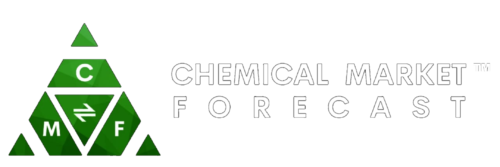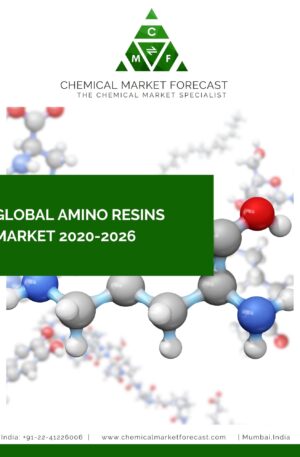Global Lubricants Market
Lubricants are substances used to reduce friction and wear between surfaces in contact with each other, as well as to provide a barrier to prevent corrosion and contamination. The lubricants market is a global industry that includes a wide range of products, including engine oils, hydraulic fluids, industrial lubricants, and specialty lubricants.
The demand for lubricants is driven by the growth of the automotive, industrial, and energy sectors, among others. Key trends in the lubricants market include the increasing demand for synthetic and bio-based lubricants, the growth of electric and hybrid vehicles, and the increasing use of advanced lubricants in high-performance applications.
Nature’s surfaces are all rough, at least microscopically (or even at atomic level). When two rough surfaces slide (or roll) against each other, the asperities of the surfaces interlock, adhere, and generate friction. The goal of any lubrication method is to separate the rubbing surfaces with a lubricant layer, which prevents (or at least reduces) direct contact between the bodies. The friction and wear of the materials can be controlled by selecting an appropriate lubricant.
Lubricants were invented thousands of years ago, as early as 2400 BC (and possibly earlier) when an Egyptian statue was transported to the grave of Tehuti-Hetep, El-Bersheh, using a liquid (oil/water) lubricant to reduce friction between sledge and ground/sand. By 1400 BC, Egyptians were lubricating chariot axles with animal fat. However, a solid theoretical understanding of lubricant action was only possible with the discovery of Sir Isaac Newton’s viscous flow laws in 1687. Professor Osborne Reynolds developed the classical equation of thin film lubrication based on viscous flow laws. This equation is the foundation of the classical hydrodynamic lubrication theory, which is the most widely used lubrication theory. Only mineral oils, vegetable oils or fats, and greases were commonly used as lubricants in the early twentieth century. However, solid lubricants, synthetic oils, water and gas-based lubricants have recently been added to the lubricant concept. The concept’s broadening has been accompanied by a better understanding of lubricant performance and limitations.
The global lubricants market is highly competitive, with several major international companies operating in the industry. These companies are engaged in continuous research and development efforts to improve the performance of their products and to address the changing needs of the market. The global lubricants market is expected to continue to grow in the coming years, driven by the increasing demand for advanced lubricants in various applications.
The lubricants market is highly competitive, with several major international companies operating as key suppliers in the industry. Some of the largest and most well-known lubricant suppliers include: ExxonMobil, Royal Dutch Shell, BP, Chevron Total, Sinopec, PetroChina, Fuchs Petrolub, Idemitsu Kosan, JXTG Nippon Oil & Energy These companies are involved in the production, marketing, and distribution of a wide range of lubricants, including engine oils, hydraulic fluids, industrial lubricants, and specialty lubricants. These companies also engage in ongoing research and development efforts to improve the performance and efficiency of their products and to meet the changing needs of the market.
In addition to these major lubricant suppliers, there are also several smaller, regional suppliers that operate in specific geographic markets and serve niche applications. The lubricants market is expected to remain highly competitive in the coming years, as companies compete for market share and strive to meet the growing demand for advanced lubricants in various applications.
TABLE OF CONTENT
Global Lubricants Market Report
1 Market Introduction of Global Lubricants Market Report
2 Market Segmentation of Lubricants Market Report
2.1 Lubricants Market Segmentation By Region
2.2 Lubricants Market Segmentation By Type
2.3 Lubricants Market Segmentation By Crop Type
3 Cost Structure of Global Lubricants Market Report
4 Country Analysis of Global Lubricants Market Report
4.1 China
4.1.1 Lubricants Market Size in China
4.1.2 Lubricants Market Trends & Analysis in China
4.1.3 Key Lubricants companies in China
4.1.4 Regulatory Framework of Lubricants Market in China
4.2 Germany
4.2.1 Lubricants Market Size in Germany
4.2.2 Lubricants Market Trends & Analysis in Germany
4.2.3 Key Lubricants companies in Germany
4.2.4 Regulatory Framework of Lubricants Market in Germany
4.3 France
4.3.1 Lubricants Market Size in France
4.3.2 Lubricants Market Trends & Analysis in France
4.3.3 Key Lubricants companies in France
4.3.4 Regulatory Framework of Lubricants Market in France
4.4 Italy
4.4.1 Lubricants Market Size in Italy
4.4.2 Lubricants Market Trends & Analysis in Italy
4.4.3 Key Lubricants companies in Italy
4.4.4 Regulatory Framework of Lubricants Market in Italy
4.5 Netherland
4.5.1 Lubricants Market Size in Netherland
4.5.2 Lubricants Market Trends & Analysis in Netherland
4.5.3 Key Lubricants companies in Netherland
4.5.4 Regulatory Framework of Lubricants Market in Netherland
4.6 Russia
4.6.1 Lubricants Market Size in Russia
4.6.2 Lubricants Market Trends & Analysis in Russia
4.6.3 Key Lubricants companies in Russia
4.6.4 Regulatory Framework of Lubricants Market in Russia
4.7 Canada
4.7.1 Lubricants Market Size in Canada
4.7.2 Lubricants Market Trends & Analysis in Canada
4.7.3 Key Lubricants companies in Canada
4.7.4 Regulatory Framework of Lubricants Market in Canada
4.8 Mexico
4.8.1 Lubricants Market Size in Mexico
4.8.2 Lubricants Market Trends & Analysis in Mexico
4.8.3 Key Lubricants companies in Mexico
4.8.4 Regulatory Framework of Lubricants Market in Mexico
4.9 Singapore
4.9.1 Lubricants Market Size in Singapore
4.9.2 Lubricants Market Trends & Analysis in Singapore
4.9.3 Key Lubricants companies in Singapore
4.9.4 Regulatory Framework of Lubricants Market in Singapore
4.10 United Kingdom
4.10.1 Lubricants Market Size in United Kingdom
4.10.2 Lubricants Market Trends & Analysis in United Kingdom
4.10.3 Key Lubricants companies in United Kingdom
4.10.4 Regulatory Framework of Lubricants Market in United Kingdom
4.11 Switzerland
4.11.1 Market Size in Switzerland
4.11.2 Market Trends & Analysis in Switzerland
4.11.3 Key Lubricants companies in Switzerland
4.11.4 Regulatory Framework of Lubricants Market in Switzerland
4.12 Brazil
4.12.1 Market Size in Brazil
4.12.2 Market Trends & Analysis in Brazil
4.12.3 Key Lubricants companies in Brazil
4.12.4 Regulatory Framework of Lubricants Market in Brazil
4.13 USA
4.13.1 Market Size in US
4.13.2 Market Trends & Analysis in US
4.13.3 Key Lubricants companies in US
4.13.4 Regulatory Framework of Lubricants Market in US
4.14 Japan
4.14.1 Market Size in Japan
4.14.2 Market Trends & Analysis in Japan
4.14.3 Key Lubricants companies in Japan
4.14.4 Regulatory Framework of Lubricants Market in Japan
4.15 South Korea
4.15.1 Market Size in South Korea
4.15.2 Market Trends & Analysis in South Korea
4.15.3 Key Lubricants companies in South Korea
4.15.4 Regulatory Framework of Lubricants Market in South Korea
4.16 India
4.16.1 Market Size in India
4.16.2 Market Trends & Analysis in India
4.16.3 Key Lubricants companies in India
4.16.4 Regulatory Framework of Lubricants Market in India
4.17 Thailand
4.17.1 Market Size in Thailand
4.17.2 Market Trends & Analysis in Thailand
4.17.3 Key Lubricants companies in Thailand
4.17.4 Regulatory Framework of Lubricants Market in Thailand
4.18 Russia
4.18.1 Market Size in Russia
4.18.2 Market Trends & Analysis in Russia
4.18.3 Key Lubricants companies in Russia
4.18.4 Regulatory Framework of Lubricants Market in Russia
4.19 Malaysia
4.19.1 Market Size in Malaysia
4.19.2 Market Trends & Analysis in Malaysia
4.19.3 Key Lubricants companies in Malaysia
4.19.4 Regulatory Framework of Lubricants Market in Malaysia
4.20 Saudi Arabia
4.20.1 Market Size in Saudi Arabia
4.20.2 Market Trends & Analysis in Saudi Arabia
4.20.3 Key Lubricants companies in Saudi Arabia
4.20.4 Regulatory Framework of Lubricants Market in Saudi Arabia
5 Lubricants Market Trends
5.1 Lubricants Market Trends- Key Drivers
5.2 Lubricants Market Trends- Key Restraints
5.3 Lubricants Market Trends- Key Challenges
5.4 Porter’s Five Forces Analysis of Lubricants Market
5.5 PEST Analysis- Lubricants Market
6 Lubricants Market Forecast
6.1 Lubricants Market Forecast By Region
6.1.1 North America
6.1.2 Europe
6.1.3 APAC
6.1.4 Middle East
6.1.5 ROW
6.2 Lubricants Market Forecast By Type
6.2.1 Fertilizer
6.2.2 Pesticide
6.3 Lubricants Market Forecast By Crop Type
6.3.1 Fruits & Vegetables
6.3.2 Oilseed and Pulses
6.3.3 Cereals & Grains
6.3.4 Other
7 Supply Chain of the Lubricants Market Analysis
8 Opportunity Analysis
9 Scenario Analysis
10 Key Company Profiles
11 Strategic Conclusions – Lubricants Market Report
12 Abbreviations used in Lubricants Market Report






Reviews
There are no reviews yet.